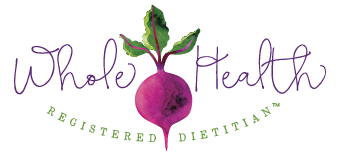I often look at other cultures for inspiration on how to live a long, healthful life. I think there are some common practices that healthy people around the world have in common. I commented on Facebook recently about how I must come across as a Francophile – someone obsessed with French culture. My last two posts had me praising cheese and liver as health foods. Now I’m writing about gelatin, a staple in French cuisine. But the truth is, all these foods are more common all over the world, not just France. And they used to be common in the U.S. too. Look at cookbooks from the 50’s, 60’s, and 70’s and you’ll find lots of recipes that include gelatin and liver!
I’ve written in the past about how our food supply in the U.S. has changed drastically over the years. It’s not just the amount of packaged, processed foods that we now have available to us, our supply of whole foods and their quality has changed as well. Let’s look at meat. Americans used to go to the butcher and have access to various parts of the whole animal. Now, in the average supermarket, we have access to this:

Rows of skinless muscle meat. Unfortunately, there was a big push to avoid certain types of fat for many decades and lean, skinless, muscle meat became what American consumers wanted. Think skinless chicken breast, flank steak, ground turkey, etc.
These cuts are brimming with methionine, tryptophan, and cysteine, amino acids which are inflammatory, inhibit thyroid function, depress immunity, decrease the body’s ability to withstand stress, and are associated with many problems of degeneration and aging (1). No wonder there are many research studies on meat that are negative!
Calorie restriction made a splash in the news a few years ago as a potential way to live longer (2). It’s speculated that the same life-extending benefits of calorie restriction could be attained with methionine restriction, without the hunger, and lowered metabolism and fertility. But here is the twist:
“A fascinating but woefully little-known study in 2011 showed that in mice, supplementing with glycine—an amino acid found abundantly in connective tissue and gelatin and bone broth—had the exact same life-extending effect as restricting methionine. Without reducing calories or other amino acids, glycine supplementation increased the rodents’ lifespan, reduced fasting glucose and insulin, decreased IGF-1 levels, and nearly halved their triglycerides—the very perks that’ve variously been attributed to calorie restriction, protein restriction, and methionine restriction.” (3)
Many experts think this research translates into humans, meaning that if you eat more gelatin, connective tissue, and bone broth – all brimming with glycine – you potentially get all the PROs of meat consumption (fat-soluble vitamins, micronutrients, bioavailable iron, complete protein, digestible protein), while minimizing the CONs.
Another reason this is a good idea besides health? Gelatin makes up about 50% of the protein in an animal. We’re literally throwing away 50% of the animal when we eat only muscle meat. From an environmental standpoint, this really sucks! Nose-to-tail eating – eating the whole animal – is more respectful to the animal and the planet, and healthier for the humans consuming it.
Potential benefits of eating more gelatin:
- Anti-inflammatory.
- Helps balance blood sugar by working with insulin to help the body use glucose properly.
- Supports healthy hair and nail growth.
- Good for joints and can help injury recovery.
- Can help tighten loose skin (Gelatin is a great source of dietary collagen. Collagen is too large to be absorbed by the skin, so don’t waste your money on fancy skin creams).
- Can improve digestion.
- Heals damaged intestinal lining (a.k.a. “leaky gut” and allergies).
- Improves stomach acid insufficiency.
- Helps improve cellulite.
- Glycine helps balance estrogen and progesterone.
- Can suppress appetite.
- Improves sleep.
Adding gelatin to the diet is easy:
- If you eat meat, eat more on-the-bone cuts of meat like shanks, short ribs, and ox tails.
- Make your own bone broth (ever wonder why homemade chicken soup is so good at curing colds?!). No time to watch a pot on the stove? It’s easy to throw chicken bones and water in a slow cooker overnight.
- Snack on homemade Jello, homemade fruit snacks, panna cotta, and other gelatin-based desserts.
- Use a supplement. Vital Proteins and Great Lakes are great brands from grass-fed cows. Gelatin can can be used to make gelatin-based desserts and thicken sauces. Collagen peptides and collagen hydrolysate both dissolve in cold liquids and can be added to juice, coffee, tea, or smoothies like a protein powder.
- When you do eat muscle meat, supplement with gelatin, either in a sauce or as a side.
1. http://raypeat.com/articles/articles/gelatin.shtml
2. http://www.nytimes.com/2009/10/11/magazine/11Calories-t.html?pagewanted=all&_r=0
3. http://rawfoodsos.com/2014/03/09/new-animal-protein-study/



